August 10th, Photo Information Blog PhotoRumors Exposed a model photo of a group of new UAVs in Xinjiang. This developing drone looks a bit like the Mavic series, most likely a small Mavic new product.

PhotoRumors (PR) called this new machine Mavic mini, and attached Dajiang official Publish the link.
But from the video showing the preview exposure, Dajiang’s video does not have much elements related to flight, aerial photography and Mavic. Instead, it refers to “handheld” and “mobile” at the beginning. In this case, the new product that Dajiang will release this time may not have much to do with the drone exposed by PR.
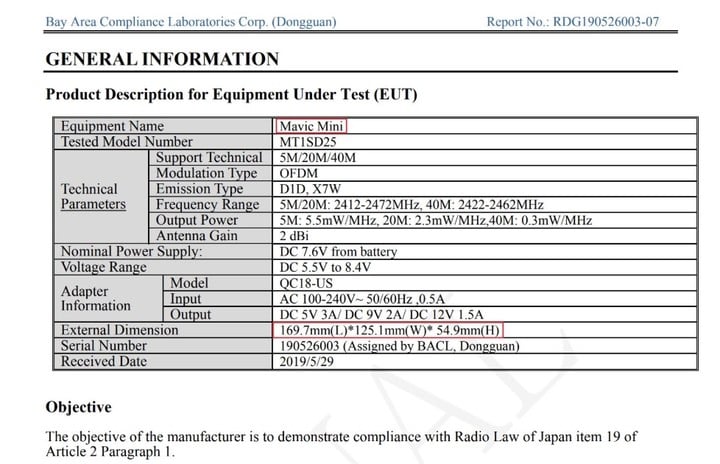
In addition to the PR report, OsitaLV, a technology blogger who previously focused on breaking new products in Dajiang, also released a new machine on their own Twitter Registration information for “Mavic Mini”.
This document not only confirms that the new machine is called “Mavic mini”, but also exposes the size and weight of the body. The new machine body measures 143mm (L) * 143mm (W) * 55mm (H) and weighs 300g. Compared with the Mavic Air, which measures 168mm (L) * 184mm (W) * 64mm (H) and weighs 430g, the new machine is smaller and lighter, making it a lighter-weight Mavic. Series drones.
Compared with the old Mavic Air, the shape of the new machine has changed significantly. The new model eliminates the Mavic Air tail design, and the overall look looks more like a small Mavic 2. The lens opening and part of the interface are also retained on the new machine, so it is possible to see the new camera and sensor distribution, as well as the battery shape.
The new machine in the picture is covered with a protective cover in the aerial camera section, and the shape of the aerial camera head and camera is not clearly seen. PR and OsitaLV also did not mention camera parameters, and it is not yet possible to determine the shooting capabilities of the new machine.
But for a major mention of a compact device, the new machine should be positioned between Mavic Air and Spark. In the future, it may replace Spark, which has not been updated, to become a portable drone that supports folding, to meet the basic needs of ordinary users for aerial photography and drones.
This speculates that the new camera may not be too prominent. DJI may put more thoughts on interaction and manipulation.
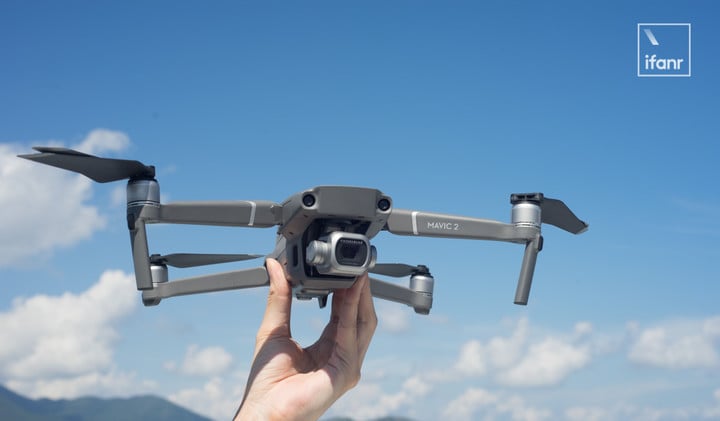 Mavic 2 series is a turning point.
Mavic 2 series is a turning point.
Before the launch of Mavic 2, DJI mainly focused on product line planning, so that it can quickly complete the goal of “full coverage of drone products.” Therefore, at that time, Dajiang made a lot of attempts in product planning:
- Spark: For the most basic drone entry-level users, meet the “just have it” needs
- Mavic Air: While meeting the basic needs, it also added a folding structure to the new machine to improve portability
- Mavic Pro: Corresponding to drone advanced users, with good picture quality and portability
- Phantom Elf Series: Replace the 1-inch sensor to improve the image quality to meet the image quality needs of high-end aerial enthusiasts
- Inspire Series: A series of professional and quasi-industrial teams in front of the team
Although the positioning of some products will overlap, at this time, DJI has been completely integrated in the layout of aerial drones, and it also meets the coverage goal from consumption entry to professional users. The product layout is also stable. For a long time.
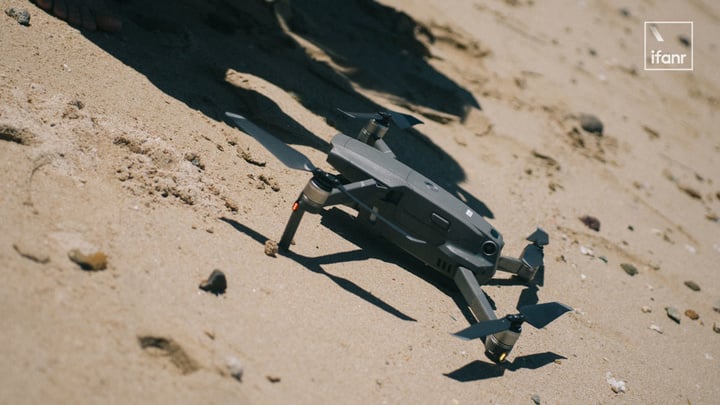
Until August 24, 2018, Dajiang released the Mavic 2 series of drones, and the product line layout of Dajiang changed again.
When we all think that the 1 inch aerial camera will be placed in the Mavic series of Dajiang to go to the “frame upgrade plan”, the Phantom Elf series will have the opportunity to use the Micro 4/3 fixed camera, Dajiang seems to give A different answer.
The Mavic 2 series, which combines the Mavic 2 Zoom and Mavic 2 Pro with zoom support, integrates the user market of the previous Mavic Pro and Phantom series.
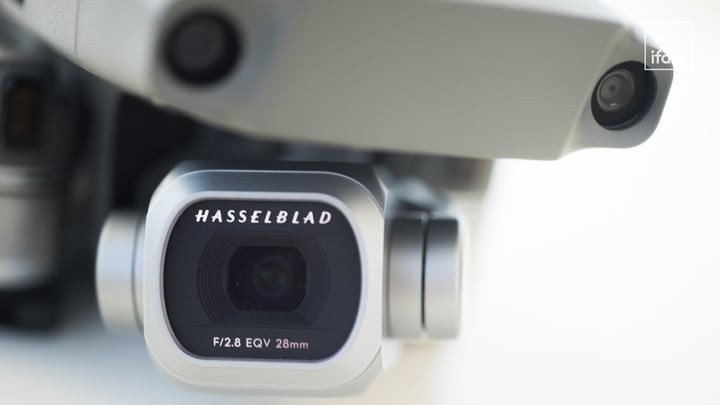
The Mavic 2 Series meets the needs of consumer users for portability, as well as zoom and Phantom-quality images.
They ensure the quality of the performance, but also through the emergence of Hasselblad technology and the appearance of the zoom structure, bringing more new ways to users.
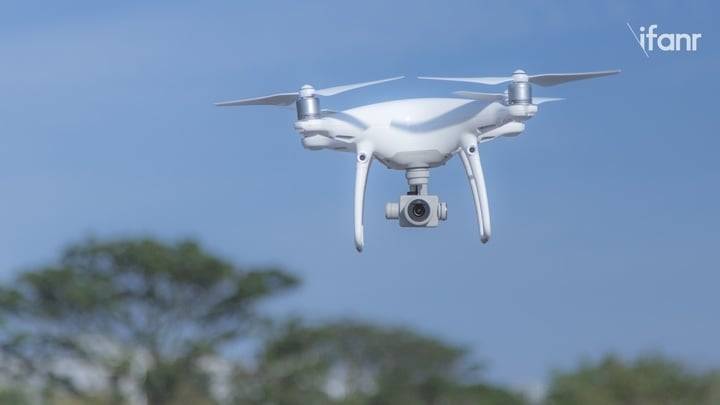
▲Dajiang Phantom 4 Pro
This way, DJI can naturally integrate the users of Mavic Pro and Phantom, and the layout of the product line is also optimized. So the news of canceling the Phantom 5 product development before is here, but it is also very reasonable.
But Dajiang canceled Phantom 5 in May this year.The rumors of product development have made the whole thing more changeable.
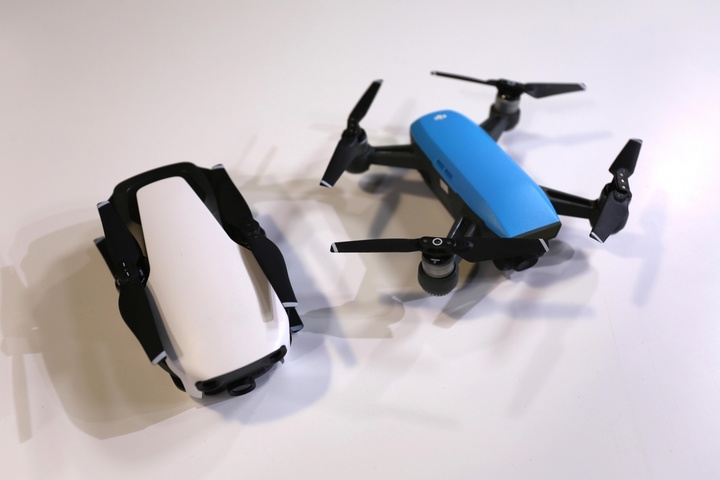
▲ Mavic Air (left) and Spark (right). Image from: Unboxing China
Back to the present, the emergence of this “Mavic mini” is likely to be the integration of Mavic Air and Spark. Compared with the combination of Mavic Pro and Phantom, the gap between Mavic Air and Spark is also smaller, and the difference between user groups is very small. The two groups often divide the price by price.
In this case, instead of letting the two series entangle each other, it is better to introduce a new product to integrate the needs of the two, which is an optimization for the product distribution of DJI.
But according to the current situation, the new machine “Mavic mini” should not be released tonight. According to the release of the Mavic 2 series last year, the Mavic mini really wants to be unveiled and may have to wait until the end of August or September.